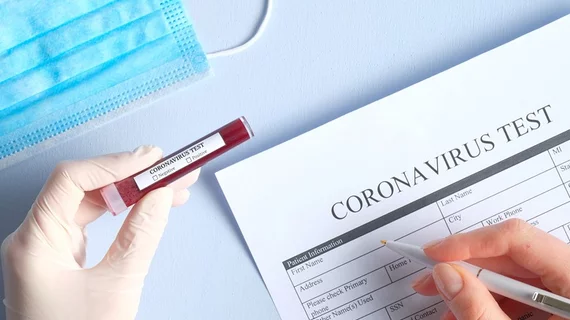5 steps every radiology department should take to safeguard against coronavirus
The newest coronavirus has now killed more than 2,000 individuals and sickened another 75,000 worldwide. Imaging is a key piece of the diagnostic puzzle and as such, every radiology department must be prepared to safeguard its staffers against this highly contagious disease.
To help others, experts from two Los Angeles-based medical schools recently detailed important infection control steps that every institution must take. They urge all imaging departments to hash out guidelines and prevent the spread of coronavirus, researchers wrote Wednesday in the Journal of the American College of Radiology.
“U.S. healthcare imaging facilities need to be prepared for the escalating incidence of new cases of coronavirus,” wrote lead author Soheil Kooraki, MD, a radiologist with the University of Southern California’s Keck School of Medicine, alongside co-authors at UCLA. “If appropriately prepared, the radiology department staff can take greater measures to manage the coronavirus outbreak impact on the facility and the personnel.”
Scientists believe that coronavirus is transmitted mainly through respiratory droplets. Frontline staffers who are within 3 feet of carriers are at highest risk, while droplets may travel as far as 6 feet. Researchers are still determining whether the virus can spread by touching the surface of a CT scanner or other contaminated item, the team added.
The authors offered every radiology provider five steps to help safeguard patients and their staff from infection:
1) When possible, use portable x-ray equipment to limit the movement of patients. Based on past experience with SARS, using a satellite radiography center and dedicated equipment helps to minimize transmission.
2) If transportation is essential, patients should wear a surgical mask while traveling in and out of the radiology department. During the SARS outbreak, the Centers for Disease Control and Prevention recommended respiratory protection using a fit-tested N95 mask or higher, or surgical mask if unavailable.
3) Care personnel should also take precaution, wearing disposable isolation gowns with fluid-resistant characteristics, a pair of disposable gloves with cuffs, protective goggles and a face mask over such eyewear. One study of 250-plus care personnel exposed to SARs found that such droplet precautions significantly reduced the risk of transmission.
4) After each contact with potential coronavirus patients, staff should disinfect all CT and MR machine gantries, noninvasive ultrasound probes, blood pressure cuffs, and mice and keyboards at imaging stations. Such surfaces should be washed with soap or decontaminated using low- or intermediate-level disinfectants. Imaging professionals should contact their vendors to determine which solutions are best for each machine.
5) To ensure that environmental services and all other staffers are on the same page, Kooraki and colleagues also recommend convening a multidisciplinary committee to game plan and outline the institution’s guidelines. All staff involved should be properly trained on these infection-control steps.
The authors also highlighted imaging features of coronavirus patients from previous research. Kooraki and colleagues emphasized that radiology will play a pivotal role in containing this outbreak.
“While further investigations on the clinical and radiological aspects of the novel coronavirus are ongoing, imaging will continue to be a crucial component in patient management,” authors concluded.

